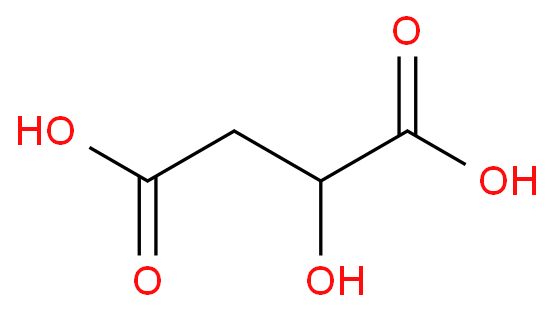 |
Malic acid is a colorless, odorless, crystalline substance that is highly soluble in water, methanol, ethanol, acetone, ether, and other polar solvents. It is a dibasic acid with two dissociation constants. At 20℃, KA1 =3.9×10-4 and KA2 = 1.4×10-5.

(R,S)-Malic acid closely resembles both citric and tartaric acids in its physical and chemical properties. However, it has a more neutral flavor, making it a preferred choice when the flavor of citric acid is objectionable.
Malic acid is commonly used as an ingredient in hard candies, sweets, jams, jellies, and various canned fruits and vegetables. It is authorized as an additive in foodstuffs in most countries.
(R,S)-Malic acid is commercially prepared in the United States and Canada by hydrating maleic anhydride. The main manufacturer in the United States is Alberta Gas, with an annual capacity of approximately 5000 t. In this process, maleic acid is heated at around 180℃ under pressure, resulting in the production of malic acid as the main product. Byproducts include maleic and fumaric acids, which can be separated and returned to the process stream.

The filtrate is then concentrated, leading to the separation of malic acid. It undergoes multiple washings, evaporation, and recrystallization to reduce the contents of fumaric and maleic acids to 7.5 and less than 500 ppm, respectively. Further purification is necessary to obtain pharmacological-grade material.
 |